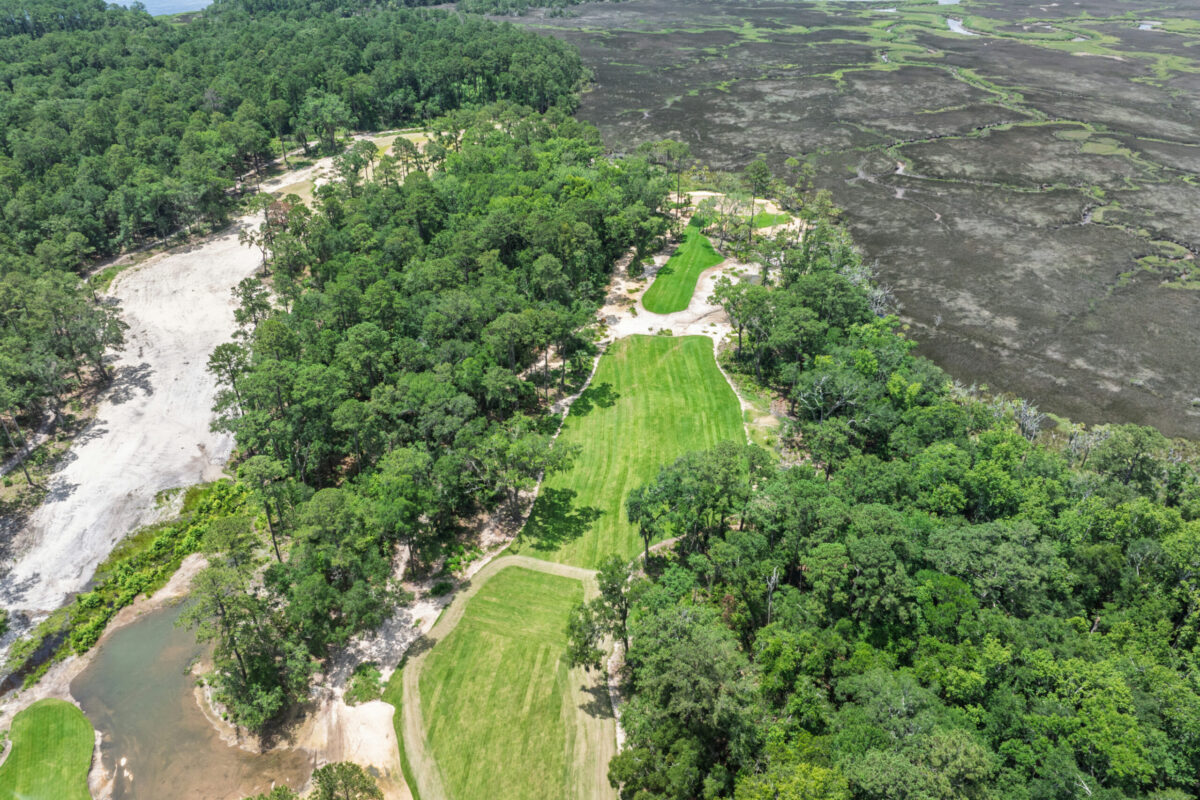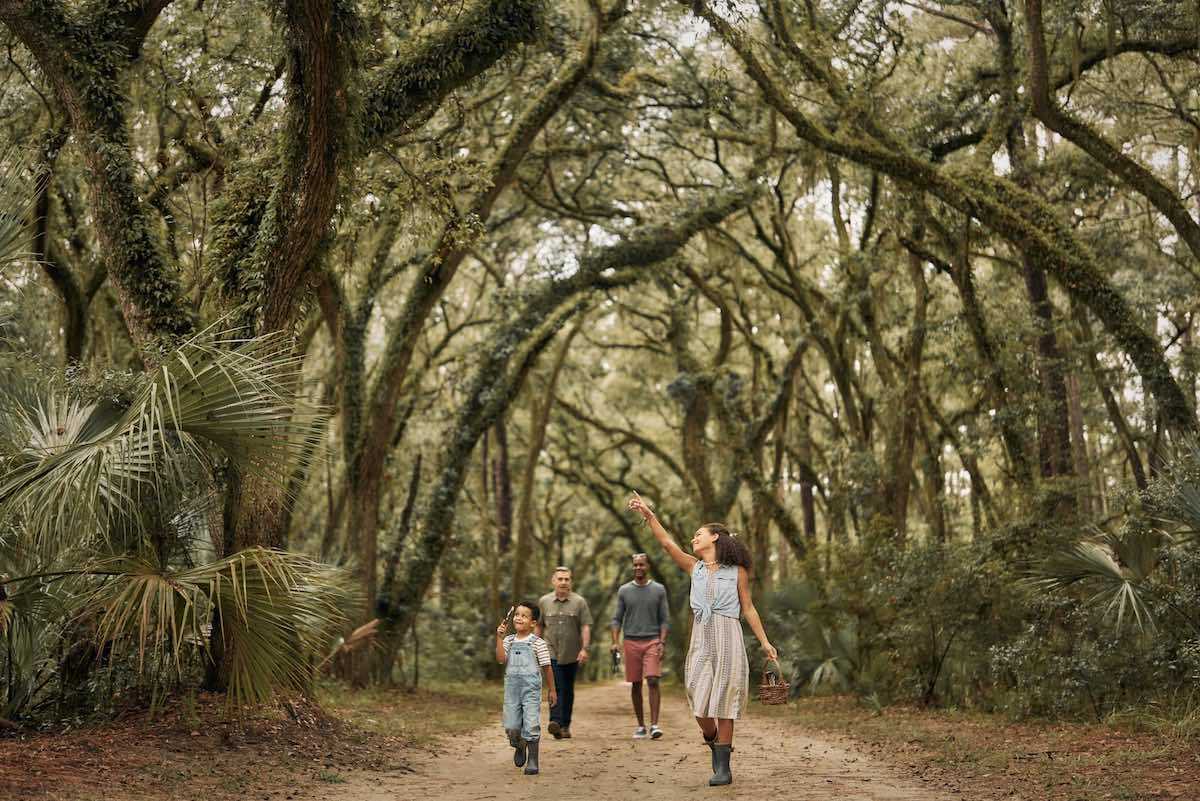Palmetto Bluff Real Estate Company Sales Office
Office Hours
Monday-Friday 9am - 5pm
Saturday 9am - 4pm
Sunday 12 - 4pm
Saturday 9am - 4pm
Sunday 12 - 4pm
Woody the Woodpecker is a character I remember fondly from my childhood. Even now I recall his iconic laugh and my attempts to impersonate it. Now in my adulthood, I have a deep admiration for the feathered friends that Woody represents. However, as a birder, I learned rather quickly that not everyone shares my love for woodpeckers. Pecking holes in houses and trees and drumming against stovepipes is not for everyone. Nonetheless, there is a purpose behind these behaviors, and we’re going to share three common reasons why woodpeckers peck trees and houses.
The first reason is food. Most woodpeckers feed on insects under the bark of (typically) dead trees. Knowing that woodpeckers are attracted to insects within wood can be a great warning sign if they begin making holes in the side of a house. This activity could be a call to action to schedule an inspection for a potential insect infestation. However, woodpeckers hanging around the house is not an immediate cause for concern, especially if there are bird feeders in the yard they love to visit.
The second reason they create holes in trees is to form nest cavities. The only woodpecker in the southeast that will excavate a cavity in a living tree is the red-cockaded woodpecker, and the closest reliable locations to find them are the Webb, Donnelley, and Bear Island Wildlife Management Areas. The other seven woodpecker species in South Carolina nest in dead trees. Cavities for nesting tend to be larger than feeding holes as the birds need to fit their body inside. Thankfully, leaving green spaces with plenty of natural cavities helps reduce the chance of woodpeckers attempting to nest in the walls of homes. If they do take interest in a house, flashy ribbon hung near the location of their pecking during the spring can be a good deterrent. I would also check to make sure the wood is sealed properly and does not show signs of rot.
When they’re not creating holes in trees for food or nesting, woodpeckers will drum on stovepipes. Drumming, the lovely knocking sound that most woodpeckers make against a tree, occurs mainly in the spring and tends to have two purposes. One purpose is to establish boundaries for that individual’s territory. The second purpose is to attract a female. In the latter, the male is trying to be as loud as possible to draw in a potential mate. The problem is that stovepipes are great at resonating noise! The solution for these early morning wake-up calls is to tie a flashy ribbon around the structure the woodpecker deemed as their “megaphone.” (Luckily, this is not a huge issue in the Lowcountry as stovepipe furnaces aren’t needed in our warmer region.)
Hopefully, I have helped explain the somewhat odd and often bothersome behaviors of woodpeckers that live in the Lowcountry. Perhaps you’ve even garnered an appreciation for them. And who knows, observing woodpecker activity may help catch a potential problem (and save you money) down the road.
%GALLERY%

Two-Bedroom Homes in Palmetto Bluff: Small Spaces, Big Advantages At Palmetto Bluff, life moves at a more thoughtful pace, one centered around nature, community, and well-designed spaces that invite you to slow down and savor the moment. Within this disti...

Take a Peek at the Coore & Crenshaw Course at Palmetto Bluff Golf has always been more than a game at Palmetto Bluff. It is a way of experiencing the land, connecting with nature, and building community through quiet competition and shared moments. With t...

Moreland Village is centered around an active lifestyle that’s easily accessible to homeowners. With the Movement Studio just steps away from the Conservancy Classroom, residents can grab a coffee from Canteen, partake in pilates, then join a bluebird research...

Brian’s Journey to Palmetto Bluff If you’ve ever spotted a feral pig along a trail, heard the call of a hawk overhead, or taken a peaceful walk through the Bluff’s maritime forest, you’ve likely experienced the quiet impact of Brian Byrne’s work. As the Palme...

Why You Should Consider Investing in a Palmetto Bluff Home Some places feel like a getaway. And then there are places that feel like coming home. Palmetto Bluff manages to be both. Tucked between Hilton Head Island and Savannah, this 20,000-acre haven in t...

This Manhattan-sized, Gilded Age enclave and National Seashore off the Florida-Georgia coast is so much more than a beachcomber’s delight. By Alexandra Marvar “There’s one. Oh, and there’s one.” He bends down to pick up a shark tooth. Then another, and anot...

Best Things to Eat in South Carolina’s Lowcountry When it comes to Southern cuisine, no place captures the heart (and appetite) quite like the South Carolina Lowcountry. Rooted in history and layered with coastal influence, this region serves up a culinary id...

Marissa’s Journey to Palmetto Bluff At Palmetto Bluff, hospitality goes beyond service; it’s a way of life. For Members and visitors alike, there’s a quiet charm to the place that draws you in, makes you feel at ease, and leaves a lasting impression. Few peop...

Top 7 Palmetto Bluff Nature Trails Do you ever get the feeling of wanting to escape and wander into a serene paradise? The nature trails at Palmetto Bluff afford opportunities to roam and admire the vastness of the Bluff’s 20,000 acres. Throughout the communi...

Palmetto Bluff’s Moreland Village feels a world away from the more traditional architecture of the iconi...
Learn about the Palmetto Bluff Conservancy and how we keep the vision of our land in place.
On land or water, there is an ever-evolving variety of activities.
We do not attempt to independently verify the currency, completeness, accuracy or authenticity of the data contained herein. All area measurements and calculations are approximate and should be independently verified. Data may be subject to transcription and transmission errors. Accordingly, the data is provided on an “as is” “as available” basis only and may not reflect all real estate activity in the market”. © [2023] REsides, Inc. All rights reserved. Certain information contained herein is derived from information, which is the licensed property of, and copyrighted by, REsides, Inc.